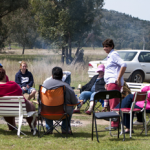Mission Information
New ABM Project
 Each year the parish Mission Committee selects a current ABM project to which we ask ABM to direct our Parish giving for the year. For the past two years we have selected Papua New Guinea projects.
Each year the parish Mission Committee selects a current ABM project to which we ask ABM to direct our Parish giving for the year. For the past two years we have selected Papua New Guinea projects.
This year we have chosen to support the work of the Rev’d Gloria Shipp in the Diocese of Bathurst. Gloria is an indigenous priest working mainly in support of the indigenous communities in the rural areas of the Diocese.
Further details of her work and photos can be found on the Mission Notice Board (by the kitchen servery window) or by clicking here.
